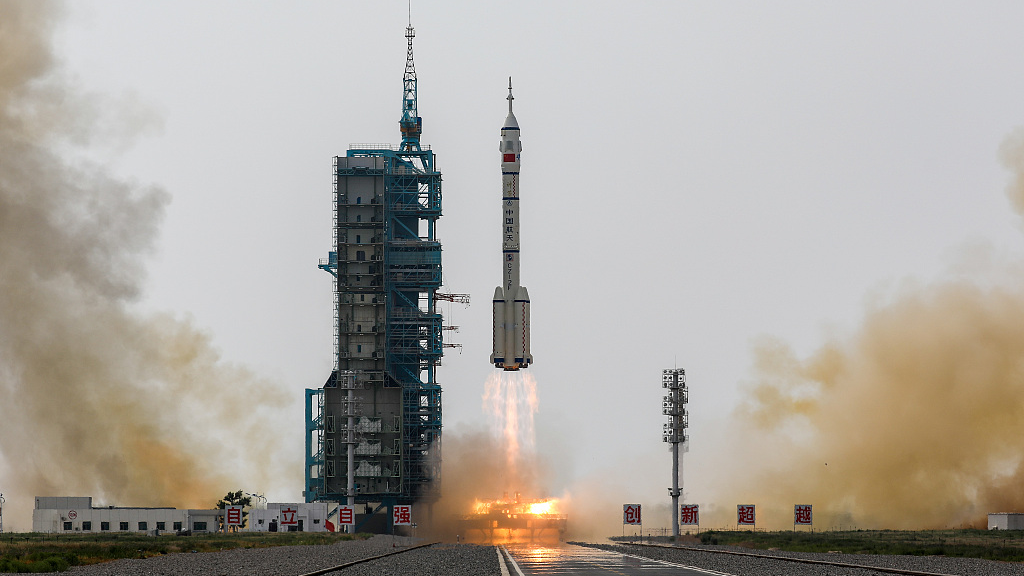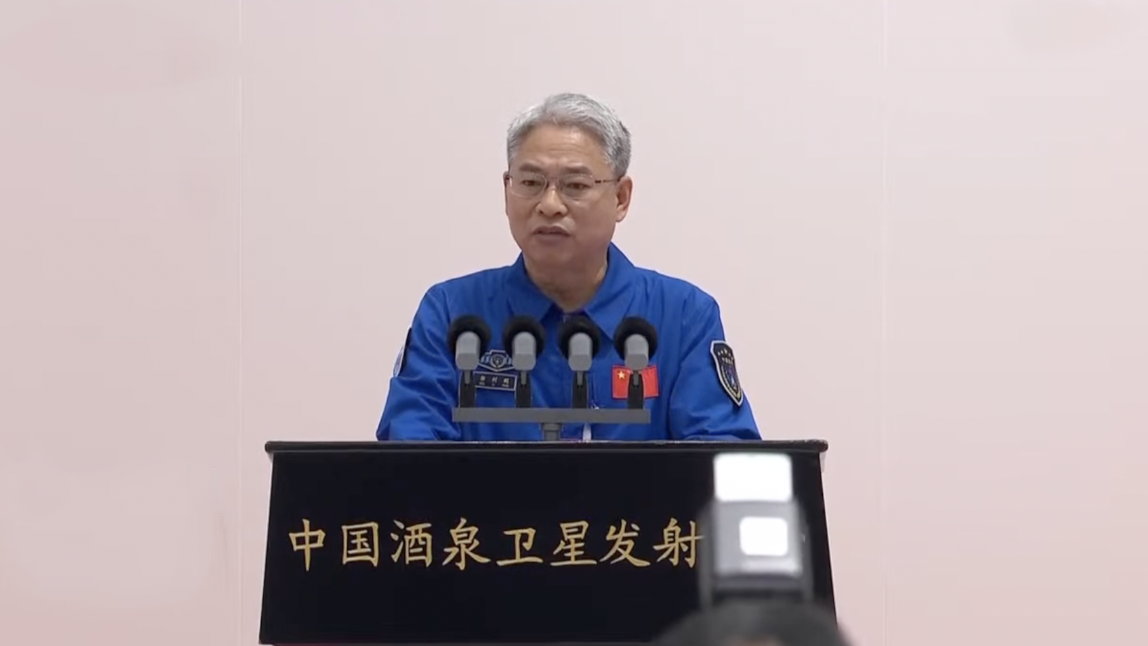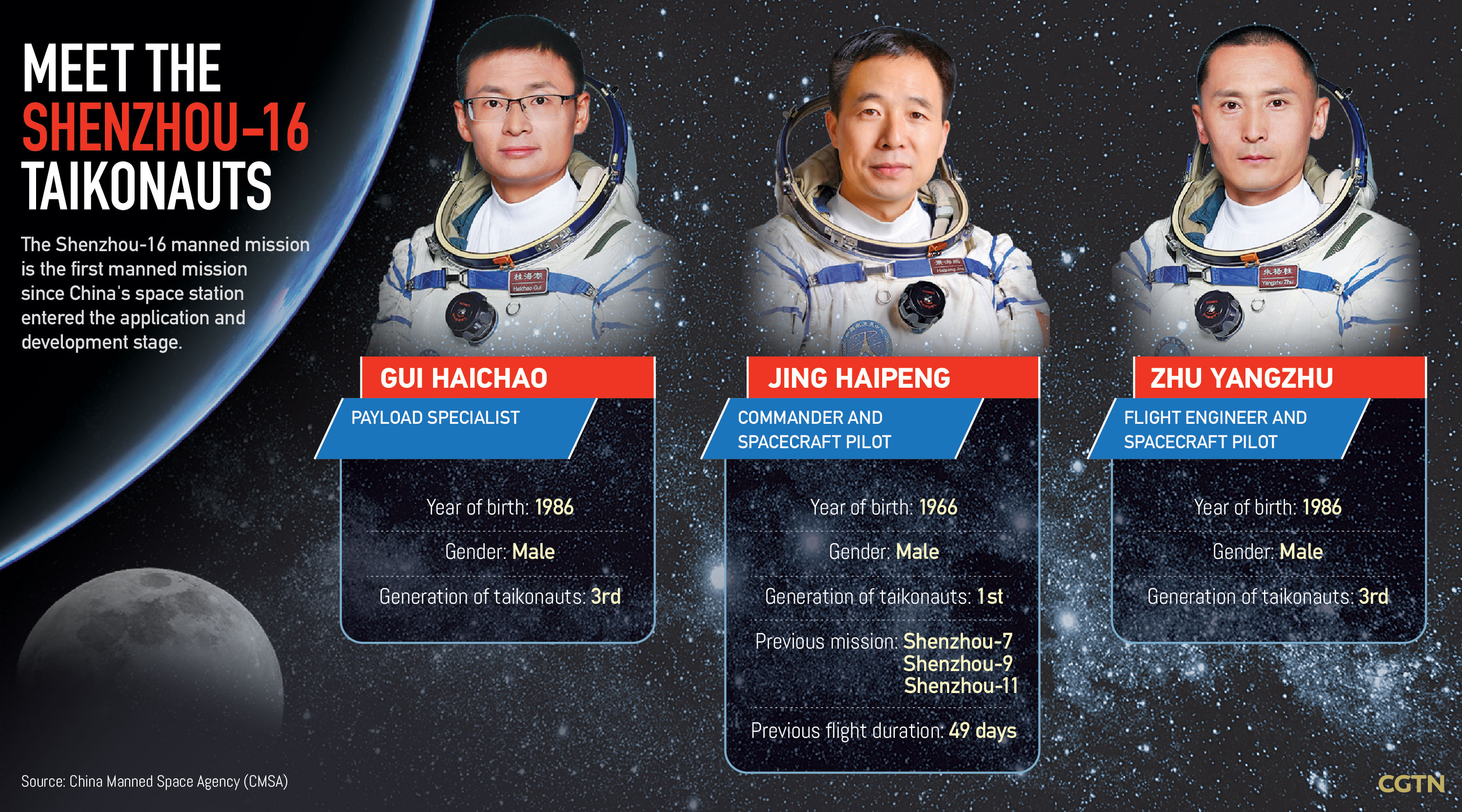00:36

The Shenzhou-16 manned spacecraft embarked on its journey to the China Space Station on Tuesday. It is the first manned mission since the space station entered its application and development stage.
Carried by a Long March-2F rocket, the Shenzhou-16 spaceship lifted off from the Jiuquan Satellite Launch Center in northwestern China at 9:31 a.m.
Approximately 10 minutes after the launch, the Shenzhou-16 spaceship separated from the rocket and entered its pre-determined orbit, prompting the China Manned Space Agency (CMSA) to declare the launch a complete success.
Click here for the special coverage of the launch.
00:42

The spaceship will conduct a fast automated rendezvous and dock at the radial port of the Tianhe core module of the space station, forming a combination of three modules and three spaceships.
Crew with three firsts
Before the launch, a see-off ceremony was held at the Jiuquan Satellite Launch Center for the three-member Shenzhou-16 crew: mission commander Jing Haipeng, spaceflight engineer Zhu Yangzhu and payload expert Gui Haichao.
Jing has become the first taikonaut to go into space for a fourth time with this mission as he previously participated in the Shenzhou-7, Shenzhou-9 and Shenzhou-11 manned missions, serving as commander in the last two.
Meanwhile, Zhu, a former university teacher with a doctoral degree, will be the first flight engineer entering China Space Station.

The third crew member Gui is a professor at Beihang University. Many social media users were surprised when the CMSA revealed his name on Monday because he is China's first taikonaut to wear glasses. Upon his arrival, the space station will welcome its first payload specialist.
"Flying on a rocket is so cool!" Gui expressed during the rocket roaring.
Read more: 'First taikonaut wearing glasses' hot topic on social media in China
Five months in space
According to the CMSA, the Shenzhou-16 crew will be staying on the China Space Station for approximately five months.
During their stay, they will be engaged in various tasks, including conducting an in-orbit crew handover from the Shenzhou-15 crew, carrying out scientific experiments, testing payload applications, performing extravehicular activities (EVAs) and cargo tasks from the airlock module, said CMSA Deputy Director Lin Xiqiang.
They will be involved in installing extravehicular payloads and also maintenance and repair tasks on the space station.
The crew will also conduct planned large-scale in-orbit tests in various fields, which are expected to yield significant scientific achievements in the research of novel quantum phenomena, high-precision space-time-frequency systems, the verification of general relativity, and the study of the origin of life.

The "Tiangong classroom" teaching activities will also continue during their mission.
The crew's mission will involve two docking and departure exercises, including the return of the Shenzhou-15 spacecraft, the re-docking and evacuation of the Tianzhou-5 cargo ship, and the docking of the Shenzhou-17 manned spacecraft.
Upon completing their in-orbit rotation mission with the Shenzhou-16 crew, the Shenzhou-15 crew who have stayed in space for over 180 days will return to the Dongfeng landing site in northern China.
It is expected that the Shenzhou-16 crew will land at the Dongfeng landing site in November after meeting with the Shenzhou-17 crew.
Massive milestones ahead
Having entered its application and development stage, it is normal for China's space station to host two crews on rotation and receive one or two cargo spaceships every year, according to the CMSA.
The rocket research team has also continued to improve the performance of the Long March-2F carrier rocket, despite already being known for its reliability and safety, through technological and innovative improvements, Rong Yi, chief designer of the Long March-2F carrier rocket at China Academy of Launch Vehicle Technology, told CGTN.
The rocket will be used for missions to lift astronauts and cargo into space during the space station's application and development stage, which is expected to run for at least 10 years, said Jing Muchun, commander in chief of the Long March-2F carrier rocket.
In addition, the country is actively developing a new-generation reusable near-Earth manned launch vehicle and a new-generation near-Earth manned spacecraft.
To enhance support for in-orbit scientific experiments and provide improved conditions for the taikonauts, an extended module will be launched in the near future. This expansion will transform the space station's basic configuration from a "T" shape to a "cross" shape.
One day prior to the launch of Shenzhou-16, China reiterated its plans to venture deeper into space with a crewed lunar landing mission scheduled before 2030.
Read more: China to perform crewed lunar landing before 2030: chief designer
(CGTN's Sun Ye also contributed to the story.)
(Cover: The Shenzhou-16 spaceship atop a Long March-2F rocket blasts off from Jiuquan Satellite Launch Center, northwestern China, May 30, 2023. /CFP)